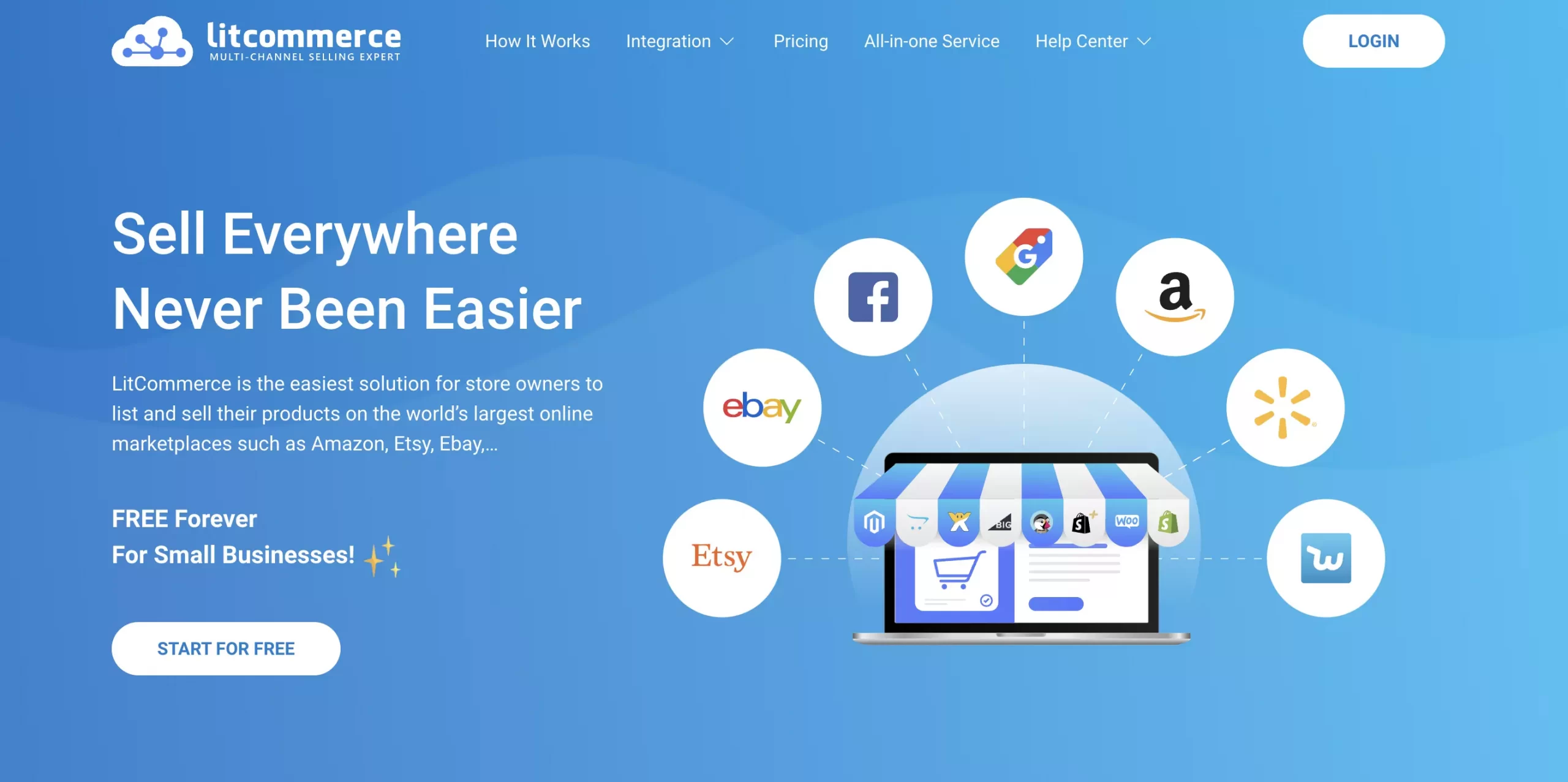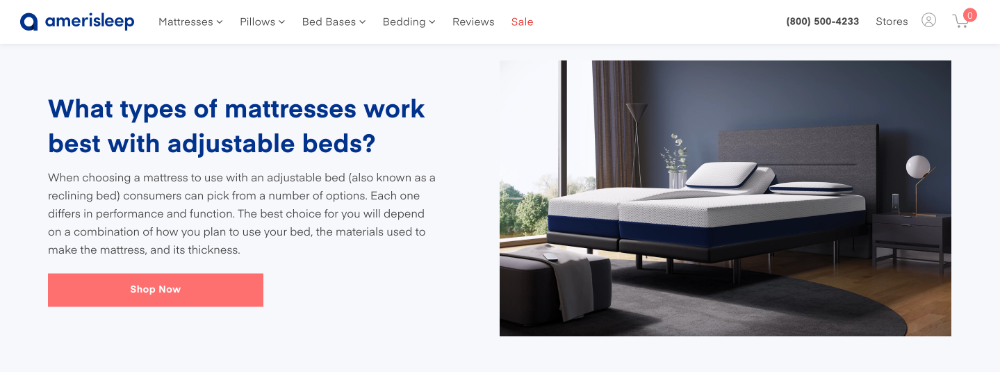Having to figure out how to start an eCommerce business on your own can sound pretty daunting. Where should you begin your research? How can you make sure that your online store is running smoothly?
Just the thought of all the work you have to put into your new business is surely overwhelming. But in reality, it shouldn’t be.
In this article, you’ll discover the important steps on how to start an eCommerce business and optimize your eCommerce store performance. Whether you’re new to online selling, or are wondering if you’ve missed out on any critical stages, here are some useful key takeaways for you:
- 10+ crucial steps to start an eCommerce business
- What to do after launching your eCommerce business
- Why you should start an online business
- How much it costs to start an eCommerce business
Let’s take a look!
How To Start An eCommerce Business In A Week: 10+ Crucial Steps
At the beginning, you might find that starting an online business would be quite similar to opening up a physical store. There are operational processes that every business owner has to go through.
But as you continue running your store, you’ll notice the differences between operating an eCommerce store and a physical one.
To help you make the most out of your time and resources, here is our detailed guide on how to start an eCommerce business:
1. Figure out your niche
Brainstorming what to sell might seem easy at first, but it can have a larger effect on your store performance than you think. It’s not as simple as selling the things you like – there have to be actual demands from the market for that product. Who would you be selling to if there’s no one that’s interested in your merchandise?
Being in high demand means your product will cater to more potential customers out there. But be careful of the tough competition that goes with it.
It’s advisable for beginners to focus on smaller audience groups with specific needs, rather than selling generic products. Specifically in eCommerce, finding these targeted niches is more important than ever.
So how do you find a good niche for your eCommerce business? Take a look to see if your buyers:
- Have a problem that they want to solve, but there are little to no available solutions
- Are eager to spend money on the solution
- Can afford the price of the solution you provide
Any niche that cannot meet these criteria should be avoided or reconsidered.
You really don’t want to sell anything that the customer doesn’t need nor have the money to pay for. Search for the space in the market where you can securely establish your online business, while having the potential to thrive in the future.
To make it easier to find your niche, consider what kind of product you want to offer to your customers as well:
- Are you selling physical or digital products?
- If it’s physical, who will be your supplier?
- If it’s digital, where do you plan to source it?
All the questions above are good references for business owners who are still figuring out how to start an eCommerce business. Having a clear sense of what you’re selling and who you’re selling to will give you a more definitive judgment as you gradually build your eCommerce business plan in the next steps.

2. Research your product
After determining the niche you wish to go for, it’s time to think of the specific products you want to sell.
As we’ve mentioned, there are a few types of eCommerce products to choose from:
- Physical merchandise: These are products that require manufacturing and storage. Physical products also need to be delivered to the customers through shipping services. These products are perhaps the most familiar to the general public. However, you have to manage your operational cost efficiently in order to maximize your profit margin. For example, eCommerce shipping fees can be extremely pricey unless you figure out a way to reduce them. You might also have to invest more at the beginning.

- Digital products: These are products that buyers can get access to just by using their Internet. You can sell and let your customers download eBooks, online courses, photos and videos… Digital products require less upfront investment and have higher profit margins. A successful example of this is the Studocu learning resource which is a real boon for students. However, they require the right eCommerce platform to sell on, and it’s harder to work on your pricing strategy.
Learn more about digital products and how you can sell them:
- Service: Selling service is probably the quickest way to start your eCommerce business. There’s little to no cost to get started, since you can basically make use of your current skills to make money. This includes services such as writing, interpreting, designing… However, selling services also means you’re selling your time. With the limited amount of time available per day, it’s harder to scale up your business if you’re working alone.
But in general, how much does it cost to start an eCommerce business? If you’re asking yourself this question, you may want to read: What are the costs of starting an eCommerce business?
3. Research your eCommerce business model
The next aspect you might want to consider early when thinking of how to start your eCommerce business, is your business structure.
There’s obviously no single model that will magically work for every online store. Depending on the type of service or product you want to sell, it’s important to pick a suitable structure for your business so that you can earn online income more efficiently.
This should help cut down the costs and ensure that your business performs more efficiently in the long run.

Currently, these are some of the most popular eCommerce business models:
- Manufacturing: This is a model that will have the highest upfront costs, since you will have to work on your own production line. But in return, you get to develop a unique product line just for your brand based on your specific requirements.
- Wholesale / Retail: If you don’t need products that are too unique and have a large storage space to keep stock, then wholesaling might be suitable for you. You will be buying products in bulks and distributing them in smaller quantities.
- Dropshipping / Print on demand: These are the 2 models that are probably the most popular among eCommerce beginners. There’s no need to invest heavily, and you won’t need space to store your products since they will arrive directly to the customer’s door. Learning how to start an eCommerce dropship business is also fairly straightforward with the amount of instructions now available.
If you feel interested in learning more about how to start a dropshipping business or a print on demand brand, here are some detailed eCommerce startup guides:
4. Determine your target market and audience
Researching about what your audience needs, where their touch points are, as well as how you compare to competitors is undoubtedly a crucial step.
To enter the market, it’s best to take notes of what trends are on the rise and use them as indicators to drive your business. Check out this list of the best eCommerce trends of 2022 to learn which eCommerce trends are on the rise.
One thing you should be mindful of when learning how to start an eCommerce business is the difference between ‘trends’ and ‘fads’. Fads are things that get extremely popular extremely fast – but the hype will die down as quickly as it rises. If you build your eCommerce business around a fad, it’s hard to maintain sales after people get bored.
On the other hand, trends will help customers realize the existing needs that they didn’t even know they have. Because you’re solving an existing problem for your customers, they are more likely to keep on buying the solution you provide.

These are a few ways you can spot the latest trends:
- Search engine: Knowing which keywords are most searched for on Google Trends will help you find what people are currently interested in, or the problems many people now have in common.
- eCommerce platform searches: This will help you get a better understanding of product demand and the scope of competition when you do research on your niche.
- Social listening: This is a great way to learn about what people are thinking about a current topic. Are their reactions to the trends positive or negative? The data will give you valuable insights to your customers and their touch points.
- Customer reviews: Check your competitors’ reviews in order to find what their customers said they are lacking, and see if you can provide a better solution to that problem. This can provide you with more ideas in developing your products to meet customers’ needs.
Analyzing your target audience’s insights should also go hand in hand with market research. Creating buyer personas will help you produce the right buying trigger for them. From their potential demographics and buying intentions, figure out how your product will best appeal to these people.
5. Learn about eCommerce laws and obtain required licenses
Compared to operating a physical store, there are fewer permits and licenses that you’re required to obtain. But no matter how small your online store might be, you should still understand the legal aspects of starting an eCommerce business.
The licenses will vary based on where you’re setting up your business, as well as the products you’re selling.
Seeking help from local authorities or from legal professionals would be our best advice.

Otherwise, here are some of the eCommerce business license documents and permits you might need:
- Home occupation permits (if you want to ship your products from home)
- Inspection certificate (health, safety, and environmental…) if any
- Professional licenses for specific industries
- Sales tax permits
- Contract and employee
6. Register your business and brand name
Once you’ve made sure that you’ve acquired the necessary permits for your store, it’s time to register your business officially. When your business is new, your vendors will likely perform some business verification before collaborating with you. Registering your business can help them verify all the information they need.
This includes thinking of the legal structure you want to follow, as well as the name of your business.
These are some of the legal structure for businesses that eCommerce beginners can register under:
- Sole proprietorship: you’re starting your online business by yourself
- Partnership: you partner with another person to own and run the business together
- Limited Liability Company (LLC): you need to hire employees for your business.
Each of these structures will have their pros and cons. As explained in GovDocFiling LLC state guide, forming LLC in different state is almost similar but you need to check different factors such as fee structure, annual fee before registering your business. In case you need more specific info on how to start an eCommerce business lawfully, we suggest consulting a legal professional. They’ll assist you in deciding which structure will suit your business the most and advise you on required paperwork if any.
For instance, if you opt for an LLC business structure, a legal professional agent will give you clear insights on everything related to formation and maintaining the entity. You can hire a registered agent or become your own registered agent. There are different types of LLC available, such as a single-member LLC, multi-member LLC, and professional LLC, each suited to different business needs.
When thinking of how to start an online store, your business name is another crucial aspect to consider. In order to create a memorable online presence, make sure that your eCommerce business name ideas are unique, catchy but still relate directly to what you’re selling. Also, try to avoid infringing copyrighted names by checking if your business name is still available for commercial use on the U.S. Patent and Trademark Office.
7. Define your brand image
The next step in our guide on how to start an eCommerce business online is for you to think of your brand image. How can you differentiate yourself from competitors of the same industry?
Brand image is more than catching the attention of potential buyers. Having a strong brand identity will help you connect with your customers better and leave them a lasting impression.

This means that everything that you deliver to your customers should feel connected and consistent. From logo, typography to your graphics and photos, your brand image should be a combination of these elements. If you’re selling physical products, your product packaging should also include your logo or brand colors.
This doesn’t apply solely to how your website will look. Brand image consistency also plays an important role in your future marketing strategy such as social media and email marketing.
8. Source your products
By this point, you’ve probably had a very detailed idea of things to sell to make money on your store and how you’ll be selling it. What’s left is to figure out how you’ll be getting your products, and this mostly applies to physical items.
Here are some tips to make sourcing your product more cost-effective:
- Making your own product: With this method of product sourcing, you have the most control over your products, but it also imposes greater risk of non-selling items. Purchase your ingredients in smaller batches at the beginning, and start scaling up when you earn more resources.
- Working with a manufacturer: The hardest part of sourcing through a manufacturer is to find one that caters to specific requirements. Most manufacturers only take bulk product orders, so you might have to cover larger costs. At the same time, pay attention to their quality checking process. This helps make sure that your products are consistent in terms of quality when delivered to your customers.
- Purchasing wholesale: It’s important to have a good pricing strategy when you sell with this business model. If you know that you’re one of the few brands on the market that can provide this solution, then you have the advantage of selling products at a higher markup. But as other competitors enter the market, make sure to optimize your prices and marketing strategy.
- Dropshipping / print on demand: There are plenty of suppliers on the market that can fulfill orders for dropshipping or POD businesses. However, the base cost and production quality for the same kind of products can differ largely. Many small business owners now opt for dropshipping service by overseas suppliers to reduce the base costs and increase profit margin.

If you’re selling digital products and online services, it’s easier to source them since you can be the one who creates the products. To save your time, take a look at some curated lists of best digital products to sell, as well as the best platforms to sell digital products on.
Try your best to make sure that you get your products from a reliable manufacturer. This will help save both your time and resources in the long run.
9. Create your online store
If you’ve reached this step, then you’re very close to the finishing stages of how to start an eCommerce business. Creating your store officially with the help of product studio will mark the start of your online presence and making your first sales.
Of course, you’d want to choose the best platform to set up your eCommerce business.
A suitable platform will provide you with the necessary eCommerce analytics tools and sufficient functions to process the orders from your customers. In general, there are currently 3 types of eCommerce solutions as follows:
- Open-source eCommerce platform: These are eCommerce website builders that allow you to view and modify their source codes. This means you get endless customization possibilities, and can freely add functionality to your store. However, to fully be able to optimize these platforms, you’re required to have a good coding background.
- Hosted source eCommerce platform: On the other hand, hosted platforms allow you to create an online store without much technical knowledge. You don’t have to worry about fixing backend problems, so these are considered the best eCommerce platform for small business. But compared to open-source platforms, they lack flexibility in terms of customization.
Still wondering which of these two you should choose? Then take a look at this detailed and comprehensive comparison: Hosted source vs. Open-source eCommerce Platforms
- Marketplace: Unlike open-source and hosted platforms, all you need to do to sell on a marketplace platform is to register your store on their multi-vendor website. This makes setting up your store even faster. But the downside is that you don’t have your own website domain. You also have very limited customization options as well.
Find out super unique and profitable products to sell on marketplaces here:
Here are some of the most popular eCommerce platforms currently available:
- WooCommerce: Powered by WordPress, WooCommerce is perhaps the most well known open-source eCommerce platform. It will provide you with hundreds of extensions to manage your order, marketing, analytics and more. You can also customize the storefront to your liking – or if you’re not familiar with heavy coding, there are thousands of beautiful themes available. It’s also among free eCommerce platforms to download and install.
Check out this tutorial on how to set up your WooCommerce store with ease: WooCommerce review for beginners
- Shopify: Shopify is a hosted source solution that is also trusted by many merchants around the world. This platform provides a great range of eCommerce functionalities and user-friendly analytics dashboard. It’s also very easy to get your store up and running using Shopify, as they only require you to fill in simple information regarding your business.
Watch this video to learn how to start an eCommerce business with Shopify:
- Amazon: Amazon is currently the biggest and fastest growing marketplace in the world. Starting an Amazon eCommerce business means being able to access its rich traffic and get your products across potential customers faster. Amazon also provides you with simple and straightforward eCommerce tools which are suitable for beginners. Learn how to start an eCommerce business on Amazon using this Amazon eCommerce business guide.
Still need more options? Check out these free eCommerce platforms, or this list of 5 most user-friendly platforms for your consideration.
After picking the right platform for your business, it’s time to upload your products, design your pages and create a beautiful storefront to attract your customers.
10. List your products on more channels
In case you want to grow your business even faster, you can list your product on more than 1 selling channel.
For example, you can create an eCommerce website and a store on a marketplace platform at the same time.
This is when you will need a multichannel selling solution to help you manage your orders across these channels.

LitCommerce is a recommended solution for eCommerce beginners who are learning how to start an eCommerce business. It also caters to store owners who wish to rocket their sales using multichannel retailing.
Basically, you can synchronize your store database across all channels in real time, and optimize your sales across these different selling platforms.
11. Attract customers to your store and grow your business
Now that you’ve finished setting up your store and uploading your products, it’s time to get customers to know about your store.
These are some common methods to drive traffic to your store and increase your sales volume significantly:
- Social media marketing: Build your audience with the right social media approach, and promote your products using popular channels like Facebook and Instagram. By growing your social media followers and creating quality content, you can get more people to notice your products and convert them to paying customers. At the same time, using social proofs in marketing will make your business appear more trustworthy to customers.
- Search engine optimization (SEO): By having a good eCommerce SEO strategy, you can drive more traffic to your product pages from search engines. For example, when customers search for a specific solution to their problems on Google, you’d want your website and products to pop up on the first few search result pages. Improve your eCommerce store rankings by enriching SEO content using quality blog posts and performing a backlink audit.
Amerisleep’s resource page on What types of mattresses work best with adjustable beds? can be the best example of well-produced SEO content with a good backlink profile and search traffic.

- Email marketing: Get your website visitors to sign up for email subscriptions using attractive CTAs. Once you’ve acquired a list of potential customer’s email addresses, create inviting email marketing campaigns to promote your products. The holiday seasons are the best occasions to send your customers attractive promotional holiday emails to drive sales.
- Paid ads: Improve brand awareness by spending on paid ads. These can be about your brand, your products or even your upcoming promotion. If you need new ideas on how to boost your sales using promotions, here are some creative sales promotions examples.
- Blog: Writing blog posts on relevant keywords related to your business and products help you attract potential customers. Many potential buyers look for product guides before making a purchase. If done well, you can turn them into recurring customers. Here is a great example from Eachnight.
What To Do After Launching Your eCommerce Business?
Once you’ve successfully launched your business and eCommerce store, it’s time to revise everything that’s happening on your website. Optimizing your website while it’s operating will help you notice problems that only arise after your launch, and help you avoid losing sales.
These are some tips for you to make the most out of your eCommerce website:
Why You Should Start An eCommerce Business
Considering how fast Internet culture is developing, it’s an undoubted fact that online businesses will keep thriving in the future. And starting an eCommerce business is one of the most profitable ways of earning money online.
Having an eCommerce store means you’ll have unlimited potential to expand your business to an international scale. With lower investment compared to owning a physical store, you can allocate more resources to growing brand awareness and brand identity.
At the same time, with current website builder tools, you can set up an eCommerce store more conveniently than ever. For those who have just started out, we recommend this list of best website builders for small businesses to help you find a suitable platform even faster.
Even if you don’t know where to start, there are plenty of how to start an online business for dummies guides out there.
It’s also fairly simple to find suppliers to source your products. For some business models, you don’t even need a place to store your products. They can be shipped directly to customers, thus you no longer have to worry about logistic issues.
With this, learning how to start an online business from home is easier than ever.
These are a few of the reasons why starting an eCommerce business can be beneficial. However, it’s still important to consider all the steps that we’ve mentioned carefully before starting your online selling journey.
How Much Does It Cost To Start An eCommerce Business?
Depending on the type of product you choose for your business, as well as the platform to set up your store, the cost of starting an eCommerce business can vastly differ.
Here are some other costs involved in starting an eCommerce business that you should take into consideration:
- eCommerce platform fees
Here are the latest pricings of a few widely used eCommerce platforms:
- License and permit costs
- Marketing costs
- Additional tools and software costs
- Employee costs
FAQs: How To Start An eCommerce Business
[sp_easyaccordion id=”47191″]
Final Thoughts
In general, kicking off a business on your own is certainly not a piece of cake. Occasionally, it may take lots of time, effort and resources to set up your store and show up where customers are searching.
However, there are currently plenty of tools available that can guide you on how to start an eCommerce business from start to finish. What’s left is just to build a thorough business plan and implement a strong growth strategy to keep your store running efficiently.
We hope that this guide on how to start an eCommerce business will be helpful to you on your online selling journey. If you wish to know more about eCommerce, don’t hesitate to check out our dynamic eCommerce community and join the discussion with other active members!